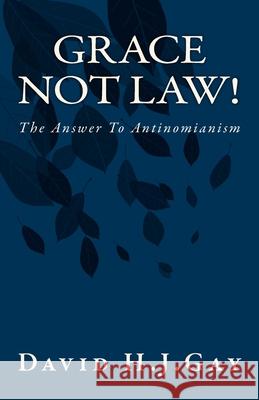Grace Not Law!: The Answer To Antinomianism » książka
Grace Not Law!: The Answer To Antinomianism
ISBN-13: 9781493746835 / Angielski / Miękka / 2013 / 100 str.
We all know that antinomianism is 'a bad thing'. But what is it? What do antinomians think? What do they do? More important, how can believers be protected against antinomianism? Most Christian teachers, preachers and writers - whether they know it or not - are disciples of John Calvin, and they argue that the way to stop antinomianism is to preach the law, and by 'the law', they mean the ten commandments. They preach rules and regulations to try to make believers conform to accepted norms of behaviour. Those who challenge this approach are castigated - and worse - for their pains. Well, David Gay is one who does challenge Calvin's system. But he doesn't do it for the fun of it. He is convinced the New Testament has a very different way of sanctification. We should not preach law; we should preach Christ. Believers should not be going to the law; they should be going to Christ. In his books, 'Christ is All' and 'Four "Antinomians" Tried and Vindicated', Gay has put forward his supporting arguments for this claim. He has also placed nine short addresses on the internet, in which he 'preaches' New Testament passages which make the case. These have been transcribed, and are now published in this slim volume, in which they appear almost word-for-word: so while this book can stand on its own, it can also serve as a script to the actual hearing of the sermons. Gay hopes that many people will check what he says against Scripture, and see for themselves that the new-covenant way of sanctification is not by law but by grace. Gay does not only want to make a case. Sadly, too many believers live a life of bondage and misery through being taken to the law instead of Christ. He wants them to come into the full liberty of the gospel, and produce a Christ-like life in this pagan world. He also hopes that unbelievers might read his book, hear the gospel, and be converted. Bear in mind that the style is not typical of Gay's work - as above, it is an almost word-for-word transcription of addresses.
Zawartość książki może nie spełniać oczekiwań – reklamacje nie obejmują treści, która mogła nie być redakcyjnie ani merytorycznie opracowana.











